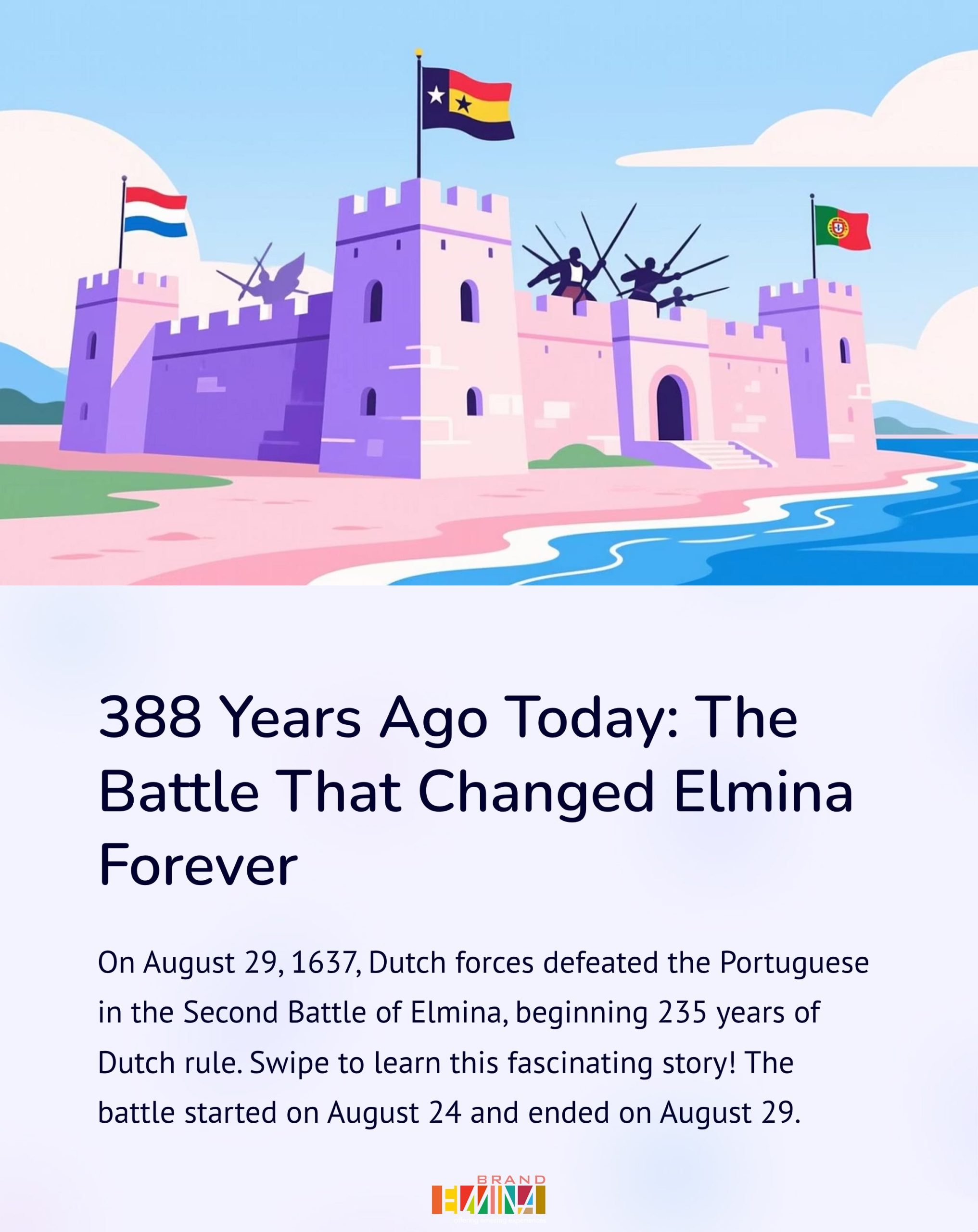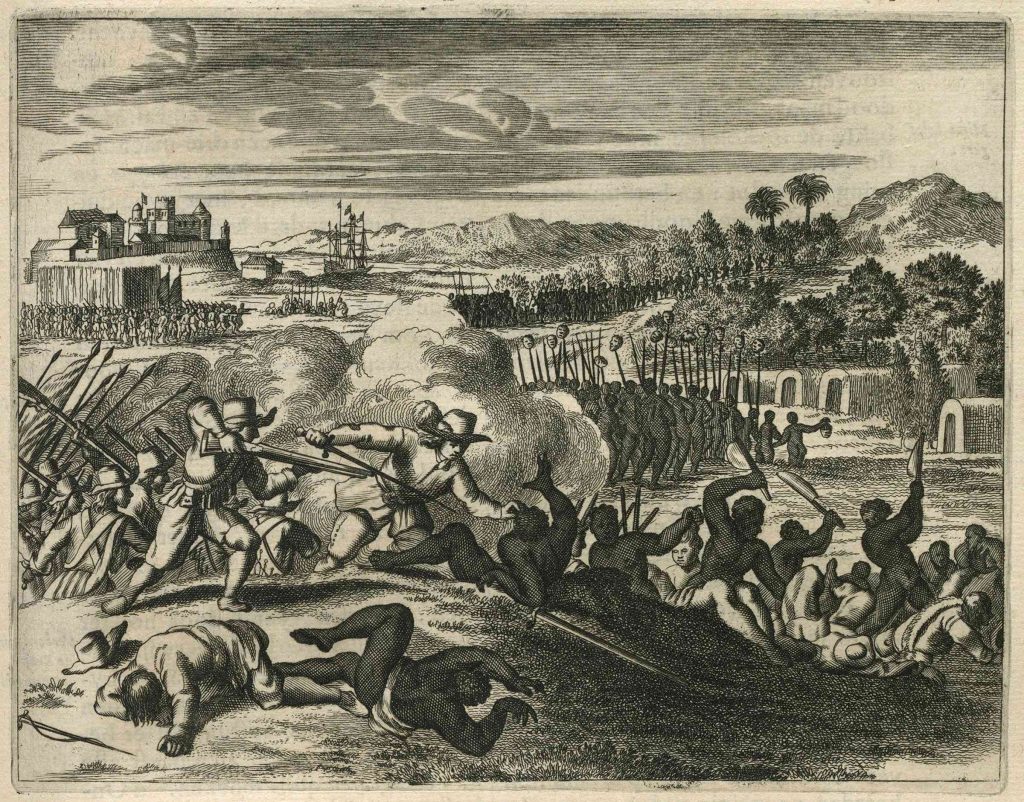The Battle for Elmina


The events that unfolded cannot be understood merely as military strategy; they must also be seen within the broader anthropology of power, trade, and cultural encounters that defined Elmina’s place in world history.
In the 1590s, Dutch trader Barent Eriksz of Medemblik inadvertently opened the path to Elmina. Captured by the Portuguese near São Tomé, Eriksz overheard stories of the immense wealth of the Gold Coast, particularly at Elmina. On his release, he returned to the Netherlands and spread this intelligence, inspiring Dutch merchants to sponsor expeditions. By 1594 he had launched the first sustained Dutch commercial venture on the Gold Coast, returning as many as eleven times.
His accounts ignited Dutch ambitions. Multiple failed assaults followed: 1596 ended in frustration; 1625 in disaster, when the Portuguese and their local allies repelled the Dutch, killing hundreds. These defeats reinforced Elmina’s reputation as both a coveted stronghold and a formidable fortress, defended not only by European garrisons but by local alliances as well.
Determined to succeed, the Dutch shifted resources from their Brazil campaigns, detaching nine ships under Colonel Hans Coine with 1,300 men. They landed near Cape Coast on July 24, proceeding by canoe down the Sweet River toward Elmina.

The Dutch identified Jago Hill (St. Jago) the high ground overlooking Elmina Castle as the key to victory. Their first assault, met by nearly 1,000 Portuguese-allied local soldiers, failed disastrously. Only on a second attempt did the Dutch manage to dislodge defenders, securing the hill after fierce fighting. Portuguese counterattacks also failed, forcing them back into their redoubt.
With the hill taken, the Dutch subjected Elmina Castle to two days of bombardment. Colonel Coine demanded surrender. The Portuguese governor requested a three-day truce, but with limited provisions Coine refused. Preparing to storm the redoubt with grenadiers, Coine forced the Portuguese into submission before the final assault could begin.
On 29 August 1637, the Portuguese surrendered. The terms allowed the governor, soldiers, and civilians to depart unarmed to São Tomé. The Dutch seized all assets gold, silver, and enslaved persons establishing themselves as the new masters of Elmina.
Crucially, this battle did not occur in isolation. It unfolded during the reign of Nana Ntakudzi I (1605–1660), king of Elmina, under whose authority the town’s inhabitants witnessed the dramatic transfer of power between Europeans. The Dutch forces were not alone; they were accompanied by Fante soldiers, demonstrating how local alliances and rivalries shaped the conflict.
From an anthropological lens, the struggle for Elmina illustrates the entangled realities of “shared history”: Europeans depended on African allies, while Africans navigated complex strategies of accommodation, resistance, and survival. These layered encounters complicate simplistic narratives of conquest, revealing Elmina as a crossroads of shifting sovereignties.
The Dutch victory in 1637 was not merely a military triumph; it marked the beginning of nearly two and a half centuries of Dutch presence on the Gold Coast. The legacies of this period are visible and lived even today:
This was more than the fall of a fortress. It was the beginning of a long, complex, and painful chapter of shared history one in which local agency, European ambition, and global trade intersected, leaving behind a legacy still evident in Elmina’s memoryscape today.